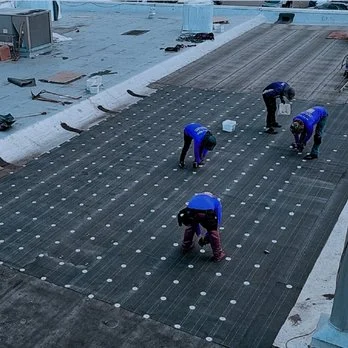Choosing the right roofing materials is one of the most important investments a property owner can make. A well-selected roof not only enhances the durability and lifespan of your structure but also plays a major role in energy efficiency, maintenance requirements, and overall property value. The right material provides protection from the elements, complements the building’s architecture, and reduces long-term repair and replacement costs. Because every climate and building type presents unique challenges, understanding the characteristics, advantages, and limitations of each roofing material is essential before making a final decision.
Asphalt shingles remain the most popular and cost-effective option for residential roofing across North America. They offer a balance of affordability, versatility, and reliability, making them ideal for homeowners seeking dependable protection without a large upfront investment. Available in a wide range of colors, styles, and textures, asphalt shingles can complement nearly any architectural design—from traditional homes to modern builds. With proper installation and maintenance, they typically last 20 to 30 years and provide solid protection against rain, moderate winds, and varying weather conditions. Some premium architectural shingles can even mimic the look of wood or slate, offering improved aesthetics and longevity. However, while they are low-maintenance and easy to repair, asphalt shingles may not perform as well in extreme climates and generally have a shorter lifespan than higher-end materials like metal or tile.
Metal roofing, on the other hand, is recognized for its exceptional durability, longevity, and energy-saving benefits. Depending on the metal type—such as steel, aluminum, zinc, or copper—and the quality of coating or finish, metal roofs can last 40 to 70 years or more with minimal maintenance. Their reflective surface helps reduce solar heat absorption, keeping interiors cooler in the summer and lowering air conditioning costs. Additionally, metal roofing is highly resistant to wind, fire, impact, and corrosion, making it a preferred choice in regions prone to storms, wildfires, or heavy rainfall. Modern designs allow metal roofs to resemble other materials like shingles, tiles, or slate, providing both aesthetic flexibility and structural performance. Metal roofing is also eco-friendly, as many panels are made from recycled materials and can be fully recycled at the end of their lifespan.
For commercial and flat roofing systems, materials like TPO (Thermoplastic Polyolefin) and EPDM (Ethylene Propylene Diene Monomer) have become industry standards due to their superior weather resistance, flexibility, and ease of installation. These synthetic membranes are designed to provide long-lasting waterproofing and UV protection, ensuring the roof remains durable in harsh environments.
- TPO roofing is especially valued for its energy-efficient and reflective properties, which help lower cooling costs and maintain comfortable indoor temperatures. Its heat-welded seams create a strong, watertight bond, reducing the risk of leaks.
- EPDM roofing, often referred to as “rubber roofing,” is known for its elasticity and resilience in colder climates, where temperature fluctuations and freeze-thaw cycles are common. It can last 30 years or more with proper maintenance and is resistant to cracking, shrinking, and UV degradation.
Beyond these popular options, other materials like clay and concrete tiles, slate, and synthetic roofing are also worth considering for certain applications. Clay and concrete tiles, for example, provide excellent heat resistance and timeless aesthetics, making them ideal for hot or Mediterranean-style regions. Slate roofs, though more expensive, offer unmatched elegance and longevity, often lasting over a century with proper care. Synthetic roofing materials, made from engineered composites, can replicate the look of natural products while offering improved weight, cost, and impact resistance.
“Choose smart, build strong, and let your roof work for you.”

Ultimately, the choice of roofing material should strike the right balance between cost, longevity, maintenance requirements, climate suitability, and aesthetic appeal. Every material has its own advantages, and understanding how these factors interact helps ensure a smart, long-term investment. A roof that performs well in one region may not be ideal for another, which is why local weather patterns and building design must always be considered.
Consulting with an experienced roofing contractor is highly recommended, as professionals can accurately assess your property’s specific needs, recommend the most suitable materials, and guide you through available warranty and installation options. Proper installation is just as important as the material itself—it ensures maximum durability, energy efficiency, and protection against the elements. By making an informed decision and relying on expert guidance, property owners can achieve a roof that not only looks great but also delivers lasting performance and peace of mind.


